Thomas Bata
Tomáš Baťa
(* 3.4.1876 + 12. 7. 1932)
Tomaš Baťa was one of the most important Czech entrepreneurs of all time. He was trained as a cobbler in his father's workshop. In 1894, together with his siblings, brother Antonín and sister Anna, he founded a shoe factory in Zlín, which has successfully and dynamically evolved. The company reached its greatest expansion in former Czechoslovakia. After his brother's death in 1908, T. Baťa became the sole owner of the company.
In 1922 Baťa, supported the Rabbi policy Clearance Sale and at significantly reduced prices, created conditions for further developments of his manufacturing business. During this time the study tours abroad also began to introduce modern management principles and organization of work: including manufacturing belts, self-charging production units, and premium and employees shares in profits. The benefits of good advertising were tremendous.
In 1931 the family business evolved into a public limited company, building up its sister companies and foreign interests, including footwear, except the raw material base and extensive sales network. Baťa factories educated employees in their own school and they provided various social benefits, such as housing, to skilled workers.
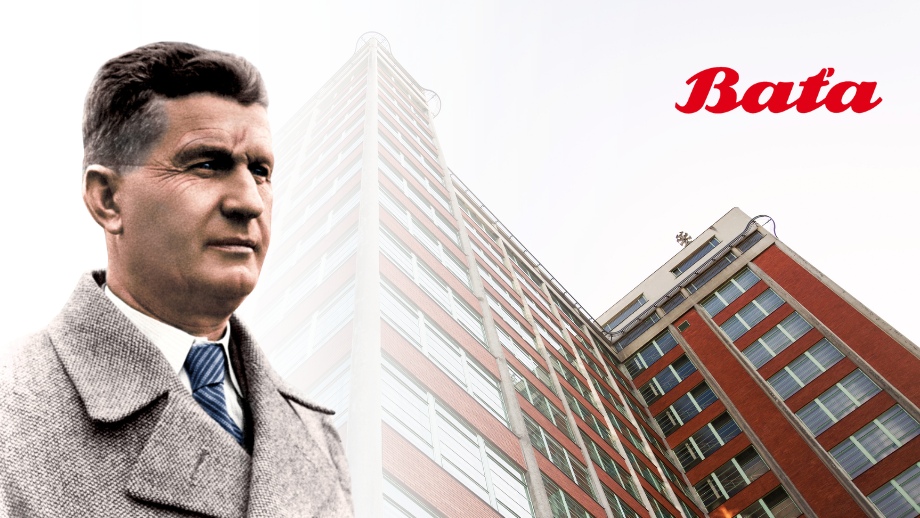
Tomáš Baťa, personality from Zlín
Tomáš Baťa and Zlín
The city of Zlín, which was at the time of the birth of Tomáš Baťa just one of the many small towns in Czechoslovakia, after his death Zlin had grown in unprecedented proportions. The company had built department stores, a hotel, a cinema, a large hospital, school buildings, research facilities, film studios, and thousands of new apartments.
The frenzied construction activity had transformed Zlín into a technological, industrial city. Zlín was not built spontaneously but in modern urban concepts. Due to the effects of significant architects (J. Kotěra, F. L. Gahura, V. Karlík, Le Corbusier, M. Lorencem), Zlín achieved a unique character as a European functionalist city.
From 1923-1932 Tomáš Baťa was mayor of Zlín. During this time, he used an "American" form and Zlín was full of houses with gardens for employees. Baťa also supported other activities including arts, as evidenced by inter alia, the construction of film studios, which were created to support advertising and made the first Czech cartoons.
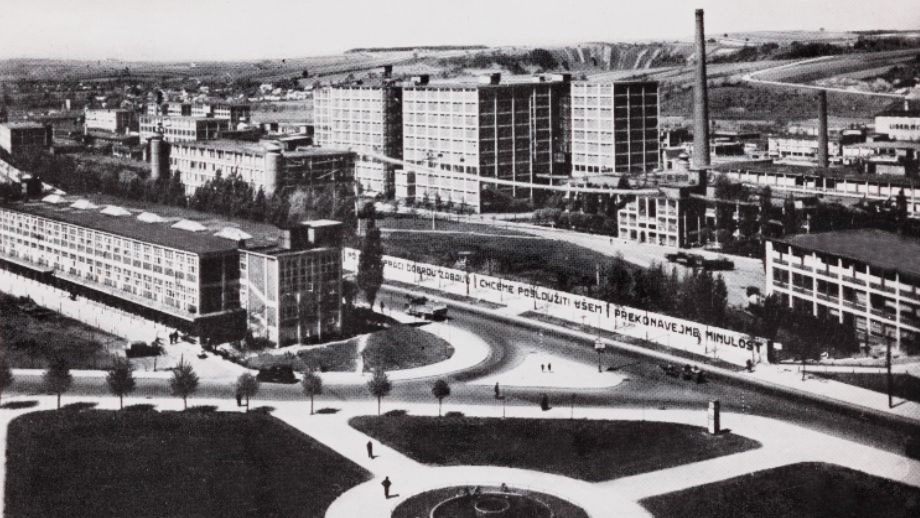
Zlín, the 20th century, source: tomasbata.org
History of the building
Tomášov was actually a continuation of the Baťa School of Work, as Baťa held the motto “ To be able to have quality workers we have to educate them.” Young people 14 years of age came to the Baťa School of Work (BSP). The school gained an excellent reputation because it was able to employ the best teachers and educators. The slogan “Every dollar that we spend on effective schooling, will be given back many times in life.
The studies were very hard. The boys and girls lived in dormitories along the boulevard where the House of the Arts is located. The Baťa School received the children free of bad habits and experiences because he said it is better to educate the students from the ground up. When the students, called “young men” and “young women”, were admitted into the school dormitories they could bring only limited clothing. Everything else they had to provide from their own earnings. Each day students worked as adults – from 7 to 12 pm and then after a two-hour break they continued to work until 5 pm. After their work was finished, they were then expected to study for a further three hours. This was very tough – about 50% of the students at BSP didn’t complete their studies. Some Baťa BŠP graduates are still alive and own a graduation badge called ABŠ, which is very rare.
Baťa school of Work was established in 1925. In 1940 there were 4 280 students who successfully graduated. In the second half of the 30’s, despite the school having such a good education system, Baťa company began to lose young men, who would be able to hold the highest economic positions such as directors, throughout the world. The BSP had not enough challenges to meet this. Therefore, it began to build superior levels of education at the institute named Tomášov, in honor of the founder, and later the institute Miladov, for women, was also built. Mr. Hub was named the director of the Institute. About 50 people from ABŠ were selected. These students were the best, the elite of BSP students were called Tomášovci. The management of the factory said “ There is no worldwide school for directors. Although Tomášov is designed to raise educated managers no “Tomášov man or woman” was certain to become a leader. They were being prepared for leadership roles in the modern economy of the world. They copied the elite English and American colleges of Harrow and Rugby to educate future businessmen. During their studies, they had to wear suits, and hats and learned the habits of high society such as foreign languages, social behavior, and also how to communicate with people around the dining table. They even had to put on formal clothes in the factory where they worked. At work, they had to wear a jacket, white vests, hats, and gloves and then dress in working clothes.
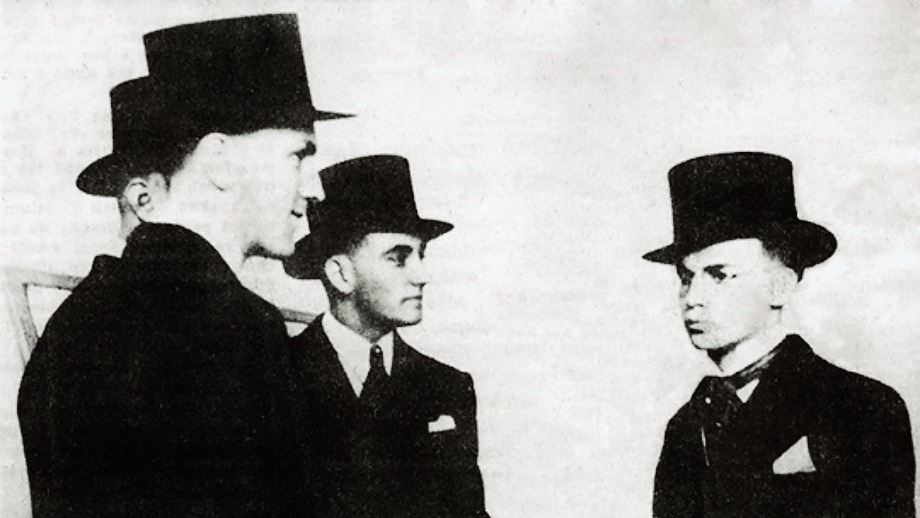
Historická fotografie Tomášovců, source: zlin.estranky.cz
After returning from work college education continued. They learnt how to play rugby, golf, horse riding, and other “gentlemen's games”. Their tutors were professionals in high education.
On the walls of the company and the building of Tomášov were the mottos: “Let us be first, let us be winners”, “Fighting is the father of everything, “The day has 86 000 seconds”, “Do not be afraid of wounds”, “Let us not made of glass, be from steel”, “Strong love a live”, “The speed is a power”. We can say that Baťa fulfilled the classic Greek ideal of Calocagathia here – the harmony of body and spirit.
After 1945 the building of Tomášov was nationalized and became a part of the Enterprise Svit. Building N. 31, where the ambulance was before, was created into an internal department, surgical, gynaecological, and later neurological, and after all, Tomášov became to be an internal department. In 1959 Doctor Francis Bakala introduced one of the most modern neurological departments of that time, which was at a high level. It was also accompanied by a rehabilitation center, which is part of today’s modern trends in treatment. In the next phase, there were separate wards for neurology, internal, gynaecological, and long-term hospital patients.
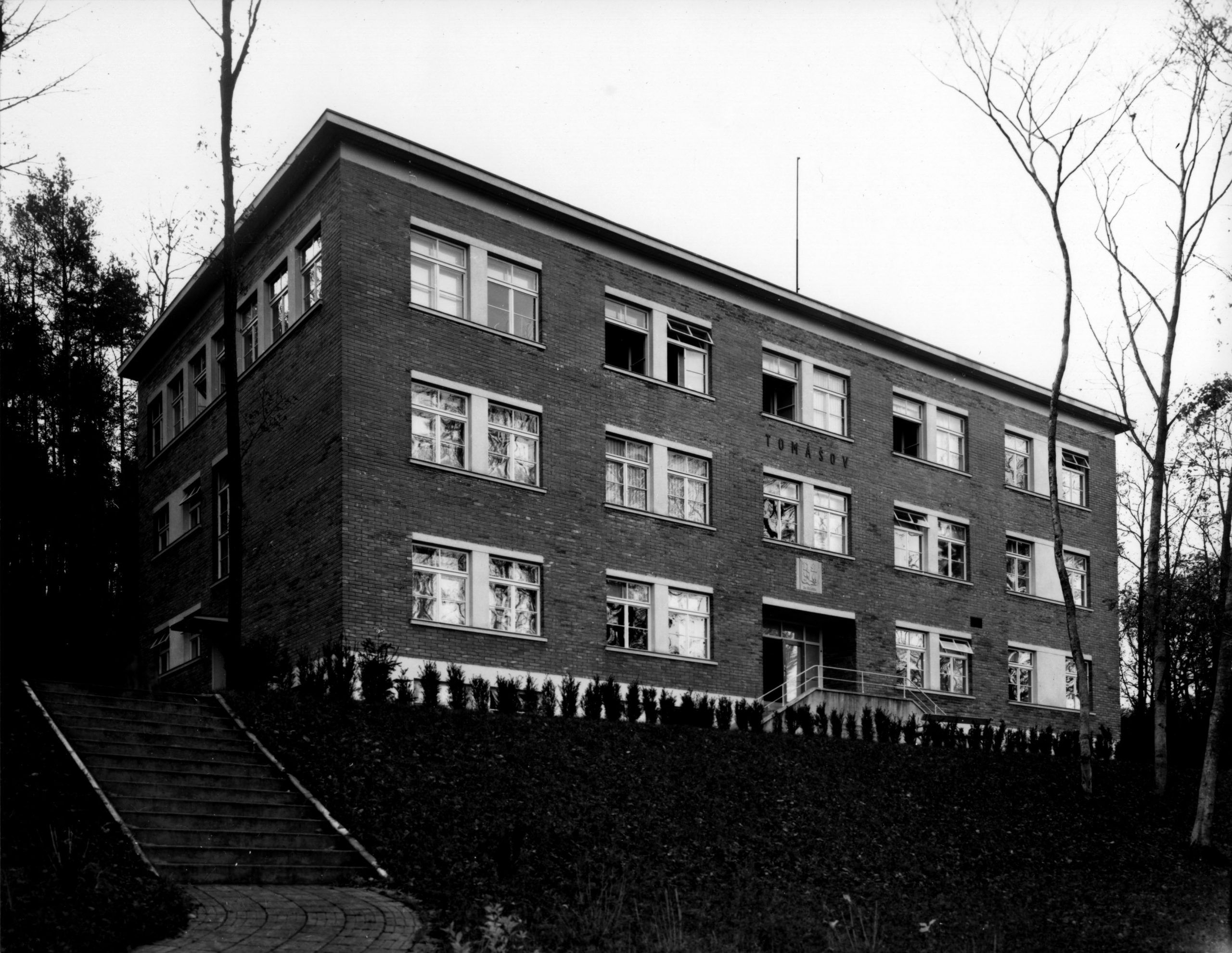
Historical photo of Tomášov, source: tomasbata.org
The location around Tomášov is very interesting: it is above Nad Ovčírnou, where, on the slope below Tomášov, are similar types of buildings – “single house”. Around 1924 Baťa announced a contest for “single house” designs and the winning ones were built in the area just below Tomášov. There is also the house of Karfík, despite being a little unmaintained. Before you enter the Tomášov building there is quite an interesting part of the site. There are two buildings of the Institute, now one of them is a Police station and the second one is a College. Between them, there is perhaps the greatest architectural memorial of Tomaš Baťa, built in memory of his tragic death in 1932.
The text is from the archive of Doctor Jiří Bakala.
Brochure | BAŤA
You can read more about Bata and the history of Zlín here (PDF)
Hotel Tomášov
Tomášov building is situated high above Zlín, a few steps from a forest.
The hotel facilities provide clients with unequaled comfort. Our professional team will take care of you to your utmost satisfaction.
In memory of the great work of T. Baťa, there is a permanent exhibition of photographs in the lounge of the building depicting crucial moments from the period when Tomášov served as a school for managers preparing for their future roles as senior executives and factory directors.
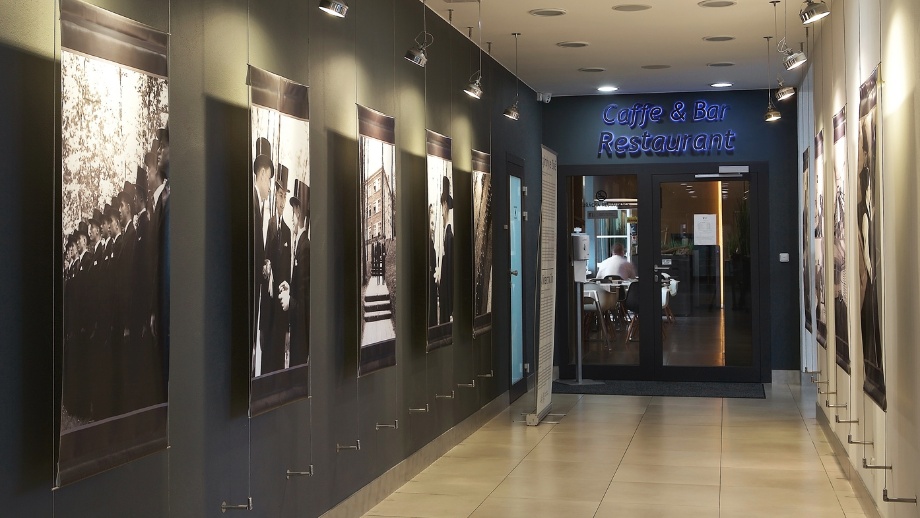
Permanent Historical Exhibition, 1st floor
See what Tomášov offers today.
